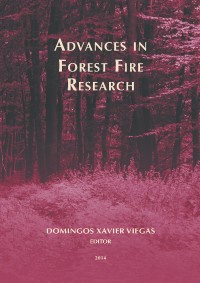Please use this identifier to cite or link to this item:
https://hdl.handle.net/10316.2/34327| DC Field | Value | Language |
|---|---|---|
| dc.contributor.author | French, Ian A. | |
| dc.contributor.author | Duff, Thomas J. | |
| dc.contributor.author | Cechet, Robert (Bob) P. | |
| dc.contributor.author | Tolhurst, Kevin G. | |
| dc.contributor.author | Kepert, Jeff D. | |
| dc.contributor.author | Meyer, Mick | |
| dc.date.accessioned | 2014-10-24T13:18:52Z | |
| dc.date.accessioned | 2020-09-09T21:31:30Z | - |
| dc.date.available | 2014-10-24T13:18:52Z | |
| dc.date.available | 2020-09-09T21:31:30Z | - |
| dc.date.issued | 2014 | - |
| dc.identifier.isbn | 978-989-26-0884-6 | |
| dc.identifier.uri | https://hdl.handle.net/10316.2/34327 | - |
| dc.description.abstract | The impact of bushfires in Australia can be enormous when considered in terms of loss of life, assets, infrastructure and productivity. The FireDST “proof-of-concept” system links various databases and models, including the Australian Bureau of Meteorology’s new “high resolution” ACCESS (Australian Community Climate and Earth-System Simulator) numerical weather prediction system, the PHOENIX RapidFire fire behaviour model, the Commonwealth Scientific and Industrial Research Organisation’s (CSIRO) smoke dispersion model as well as infrastructure and demographic databases provided by Geoscience Australia. FireDST runs multiple simulations of a bushfire utilising varying inputs (such as different ignition points, different start times, different fuel characteristics and variations in the weather) based on an understanding of what may occur. FireDST amalgamates all the simulations into a single ensemble visualisation for the fire. This paper provides an overview of the FireDST system and examines the potential for using ensemble simulations to predict short-term (1-2 days) potential impacts from wildfires. We introduce variability in the numerical weather prediction model for three case-study fires to demonstrate the ensemble modelling system. FireDST can produce both exposure and impact statistics for the ensemble fire spread, however only exposure is covered in this paper. Such information is potentially useful in assisting in the operational management of bushfires, landscape planning (such as locating infrastructure to reduce exposed to fire) and in education and training. | eng |
| dc.language.iso | eng | - |
| dc.publisher | Imprensa da Universidade de Coimbra | por |
| dc.relation.ispartof | http://hdl.handle.net/10316.2/34013 | por |
| dc.rights | open access | - |
| dc.subject | Wildfire hazard/impact simulation | eng |
| dc.subject | Ensemble modelling | eng |
| dc.subject | Integrated modelling | eng |
| dc.title | FireDST: a simulation system for short-term ensemble modelling of bushfire spread and exposure | por |
| dc.type | bookPart | por |
| uc.publication.firstPage | 1147 | - |
| uc.publication.lastPage | 1158 | - |
| uc.publication.location | Coimbra | por |
| dc.identifier.doi | 10.14195/978-989-26-0884-6_125 | - |
| uc.publication.section | Chapter 4 - Fire Risk Assessment and Climate Change | por |
| uc.publication.digCollection | PB | por |
| uc.publication.orderno | 125 | - |
| uc.publication.area | Ciências da Engenharia e Tecnologias | por |
| uc.publication.bookTitle | Advances in forest fire research | - |
| uc.publication.manifest | https://dl.uc.pt/json/iiif/10316.2/34327/211487/manifest?manifest=/json/iiif/10316.2/34327/211487/manifest | - |
| uc.publication.thumbnail | https://dl.uc.pt/retrieve/11174068 | - |
| uc.publication.parentItemId | 53868 | - |
| uc.itemId | 70311 | - |
| item.fulltext | With Fulltext | - |
| item.grantfulltext | open | - |
| Appears in Collections: | Advances in forest fire research | |
Files in This Item:
| File | Description | Size | Format | |
|---|---|---|---|---|
| 978-989-26-0884-6_125.pdf | 2.31 MB | Adobe PDF |  |
Items in DSpace are protected by copyright, with all rights reserved, unless otherwise indicated.
